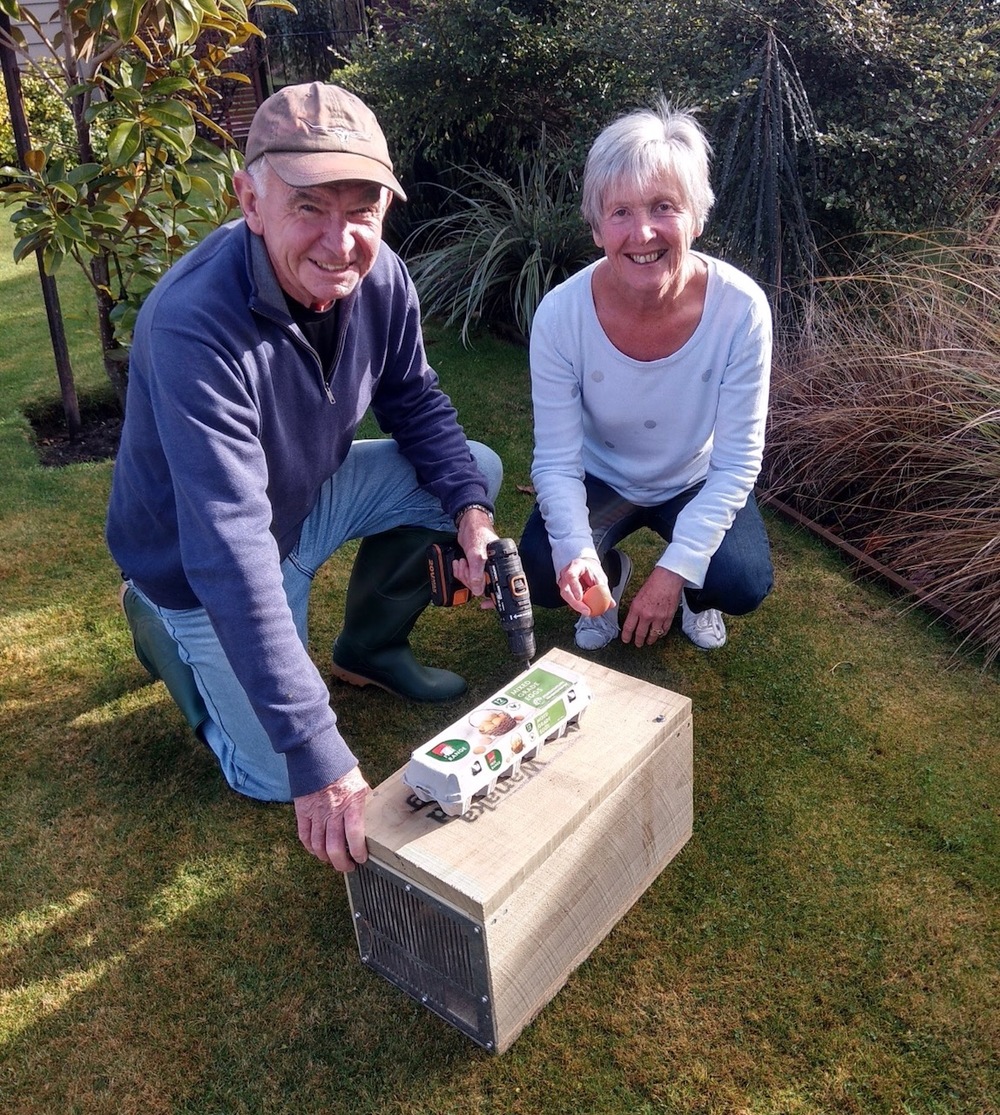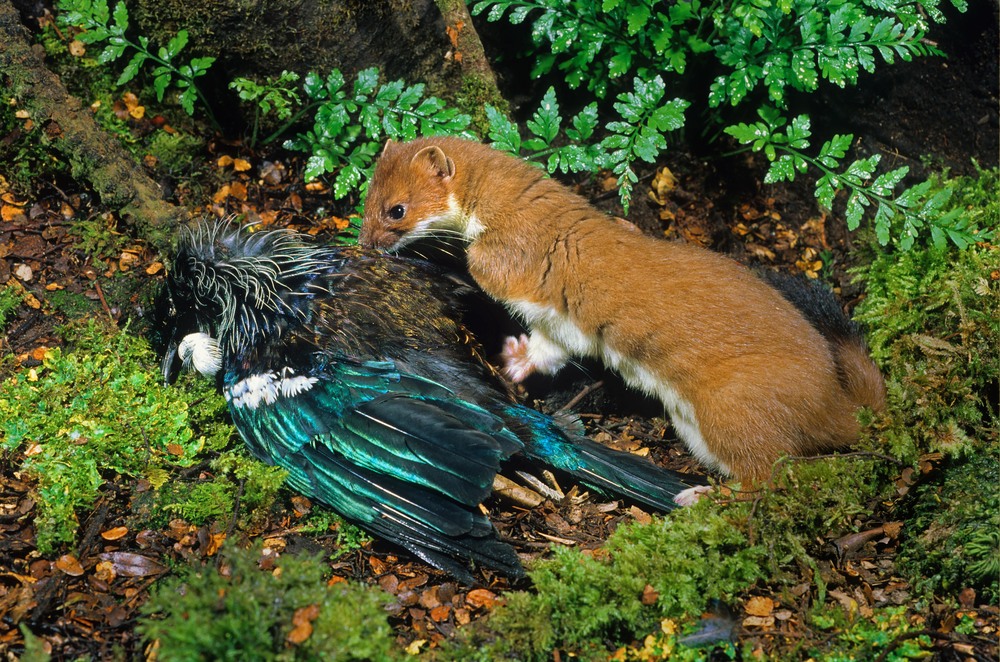For the birds: Stu Thorne
Tim Brewster
18 June 2019, 8:28 PM
 Stu and Heather Thorne
Stu and Heather ThorneForest-dwelling rats, cats and all things ermine have a special place in Stu Thorne's heart. He wants them to meet their maker - Game of Thrones style - and leave the birds alone.
Into his fifth decade of conservation work, the last nine as a volunteer since his retirement from the Department of Conservation (DoC), Stu has made the trip into the Matukituki valley countless times to enjoy the area and work to improve reestablish its once thriving birdlife.
“I’ve had such a long involvement and I'm pretty passionate about what happens up there,” Stu said.
He recalls visiting the Matukituki Valley as a boy and being thrilled by the amount of birdsong in the area.
Returning in the 1970s, employed by the former Department of Lands and Surveys as a ranger for the huts and tracks programme, he has lived in Wanaka ever since, becoming increasingly concerned about the diminishing number of native birds due to attacks from predators, especially stoats and rats.
DoC was established in 1987 and Stu was with the recreation portfolio for another 10 years before taking on the role of programme manager for biodiversity until his retirement.
Two projects he considers highlights of his career involved successfully translocating two species to the Wanaka area: alpine robins and buff weka.
The weka were transported from the Chatham Islands in 2001 to populate islands on the lake, successfully breeding away from predators. Now numerous generations later they are a common sight on Mou Waho and Stevenson's Island with their curious, social nature (a liability on the mainland) appreciated by boatloads of visitors.
In 2008 Stu acted on an idea he had to bring breeding pairs of robins from the Routeburn area and releasing them in the bush behind Aspiring Hut. He said the paperwork was the most difficult part of the project and he teamed up with Queenstown’s biodiversity officer Barry Lawrence to make it all happen.
Taking on the monitoring role banding the birds as well as checking traplines alongside Stu, his wife Heather estimates there are now about 400 robins from the original 22 released in the area.
The two have worked as a team for years with Heather becoming an integral part of the bird recovery programmes.

Stu and Heather with one of the traps.
“Once you get married to someone in DoC it becomes part of your life, if I wanted to see him, I had to get involved,” she said.
While the bush bashing and slog of getting and managing traplines can be hard at times, especially when the weather turns, the long term rewards are worth it, Heather said.
“One of the most exciting times was when I saw a bird that was banded and it was one of the originals - at least 12-years-old. I thought ‘hmm... this is great’. Just a privilege to get out and work with the birds.”
Stu has also had stints in Antarctica and Raoul island doing similar work, but the Matukituki remains his regular patrol, with side trips to Makarora and other local spots monitored by trapping volunteers.
Their volunteer work increased in scale in 2013 with the formation of the Matukituki Trust.
Established and supported by Derek and Gillian Crombie to do predator control work in the valley, the trust now has a total of 780 traps extending along the road from Mt Aspiring Station homestead, up as far as the Cascade Saddle, French Ridge, Liverpool Hut and into Gloomy Gorge.
At last count about 700 predators had been dispatched over the past year by the DoC 200 and 250 traps used.
With a core team of about ten regulars, a number of others join in from time to time, including an increasing number of overseas visitors keen to do a day in the field as well as sometimes offering valuable donations.
The trust is now expanding to look at other translocations.
A project to introduce mohua to the valley is in the pipeline following a peer-reviewed biodiversity study, Derek Crombie said. “All the scientific advice has indicated the area is suitable.”
Observations over the past summer have also been positive with lots of sightings of kakariki, robins, rock wren and a number of fledging kea suggesting successful nesting is becoming more commonplace.

A “killing machine” stoat with a tui.
The stoats, however, appear to be adapting as well, with regular sightings above the treeline as well as an alarming increase in wild cats, 40 of which were caught in live trap cages over the past 15 months.
In 2008 a stoat managed to swim 200 metres to Stevenson’s Island to kill four buff weka chicks before being caught, reinforcing the rodents’ reputation as a “killing machine” with an ability to travel between 20-30 kilometres a day in the rugged alpine terrain, Stu said.
While the birds may be oblivious to their benefactors' efforts, Mautukituki mustelids might have a different view of the Thornes’ marauding through the neighbourhood with a group of trust volunteers - possibly similar to the view villagers on the Central Asia steppes had when Genghis Khan turned up unannounced on their doorstep with a bunch of his mates.
The trust founders say the efforts of the long-time volunteers (led by programme manager and former longtime DoC ranger Paul Hellebrekers) is invaluable.
“Their expertise is locating [trapping areas] and knowing when to monitor or to clear,” Derek said.
There is strong support from DoC in their ongoing partnership. DoC supplies the traps and assists with transport with the current Wanaka biodiversity ranger, Flo Gaud, providing valuable information on predator movements with tracking tunnels.
Stu and Heather are a vital part of the bird repopulation programme, Gillian Crombie said. “They’ve been outstanding, have absolute passion for the valley, and got them set up and breeding.”
PHOTOS: Supplied

